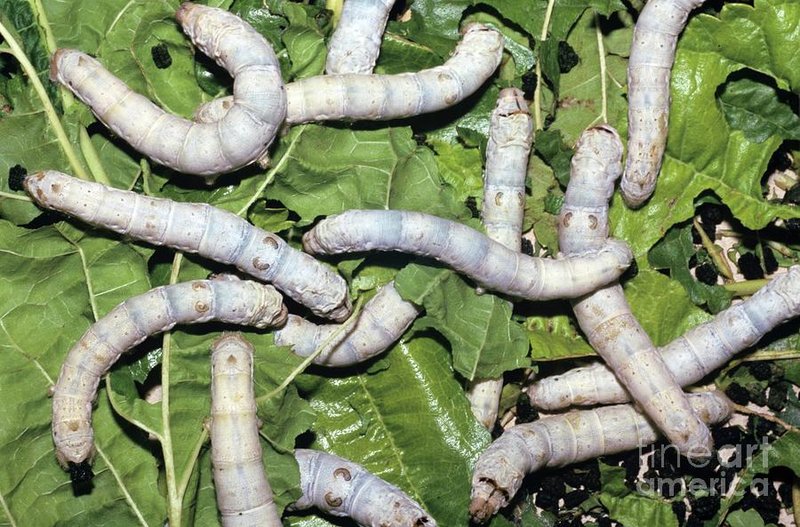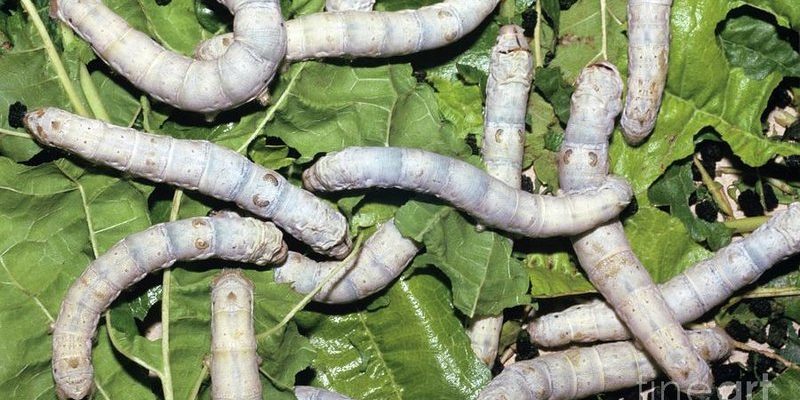
When we think about environmental stress, we’re usually talking about things like changes in temperature, humidity, or even the presence of toxins. Silkworms, scientifically known as *Bombyx mori*, react to these stressors in fascinating ways. These reactions can reveal a lot about their resilience and adaptability. So, let’s dive into the world of silkworms and explore how they cope when life throws them a curveball.
What Triggers Stress in Silkworms?
Silkworms can be surprisingly sensitive to their surroundings. A range of factors can trigger stress for them. Here are some of the most common stressors:
- Temperature Fluctuations: Silkworms thrive in a specific temperature range. If it gets too hot or too cold, it can throw them off balance.
- Humidity Levels: These creatures need a certain level of moisture to stay healthy. If the air is too dry or too humid, it can lead to stress.
- Food Quality: Silkworms primarily eat mulberry leaves. If the leaves are wilted or depleted of nutrients, it can affect their growth and well-being.
- Toxins in the Environment: Exposure to pesticides or other chemicals can disrupt their biological functions and lead to stress.
Each of these factors can directly impact how silkworms grow and thrive. Honestly, if you think about it, it’s not so different from how we react to stress in our own lives. A change in environment can lead to anxiety, health issues, and other challenges.
Physiological Reactions to Stress
When faced with stress, silkworms initiate a series of physiological changes to cope. This is similar to how our bodies react when we’re under pressure. One main response is the release of stress hormones, which can jump-start a range of adaptive mechanisms.
For instance, when exposed to high temperatures, silkworms may increase the production of heat shock proteins. These proteins act like little bodyguards, helping to protect cells from damage. It’s like how you might put on sunscreen to protect your skin from sunburn.
In addition to heat shock proteins, silkworms adapt by adjusting their metabolism. They may conserve energy as a way to withstand challenging conditions. Imagine you’re running low on funds and start cutting back on your expenses. Silkworms do something similar by slowing down their growth rates to conserve energy during tough times.
Behavioral Responses to Environmental Stress
Behavior is another way silkworms cope with stress. They show some fascinating adaptations that help them survive. When faced with adverse conditions, silkworms might increase their movement in search of better environments.
For example, if a group of silkworms is in a confined space where the air quality is poor, they may start to migrate toward a more favorable location. This instinctual behavior can be crucial for their survival. It’s similar to us deciding to leave a crowded room for some fresh air.
Another interesting behavior is their eating patterns. During stressful conditions, silkworms may alter their food intake. They might eat less if the food quality is poor or if they are feeling unwell, conserving energy for essential functions.
The Role of Temperature in Silkworm Stress
Temperature is one of the most significant factors affecting silkworms. Each stage of their life cycle—from egg to larva to pupa—has an ideal temperature range. Deviating from this range can cause everything from stunted growth to increased mortality rates.
For instance, in extreme heat, silkworms may exhibit lethargy and reduced appetite. This is their way of conserving energy when their bodies are feeling overwhelmed. On the other hand, low temperatures can stunt their growth and delay their metamorphosis into adult moths.
Farmers raising silkworms pay close attention to temperature control. They often use climate-controlled environments to mitigate stress. It’s like keeping a plant in a greenhouse to ensure it gets just the right amount of sunlight and warmth.
Humidity: The Balancing Act
Humidity plays a crucial role in the health of silkworms. Like temperature, there’s a specific range that optimizes their growth. Too much humidity can lead to mold and diseases, while too little can dehydrate the silkworms.
Imagine you’re in a sauna—too much humidity can make you feel sluggish and uncomfortable. Silkworms react negatively, too, leading to reduced feeding and increased vulnerability to diseases.
When humidity levels fall, silkworms may develop a protective cuticle layer to help retain moisture. This is akin to our skin getting dry and cracking when we don’t stay hydrated. Proper humidity levels in their environment promote successful molting and growth.
Impact of Food Quality on Stress Levels
The quality of food available to silkworms can lead to high-stress levels. Silkworms feast primarily on mulberry leaves, which need to be fresh and nutritious. If they consume wilted or nutrient-deficient leaves, they can experience stunted growth and overall health decline.
In the wild, silkworms might face food shortages, which leads to competitive behaviors. They may become aggressive toward one another or hoard food resources when times are tough. It’s like when you and your friends are sharing snacks—the stress of having fewer chips can lead to some funny but competitive moments!
Farmers realize how essential food quality is to maintaining healthy silkworms. They make sure to provide the best leaves possible to lessen stress and improve silk production.
Long-Term Effects of Environmental Stress
The long-term impacts of environmental stress on silkworms can be quite serious. Prolonged exposure to adverse conditions can lead to genetic changes, affecting future generations.
For instance, silkworms that endure chronic stress might develop traits that make them more resilient to certain conditions but less effective at others. This isn’t unlike how we might adapt to stress in our lives—sometimes, we become stronger, while other times, we might learn to cope in unhealthy ways.
Farmers must consider both immediate and long-term effects when raising silkworms. Understanding these impacts helps in developing better strategies for silk production, ensuring it remains sustainable.
Closing thoughts: Environmental stressors can profoundly affect silkworms, shaping their responses from behavior to physiology. By understanding these reactions, we can better support their needs in agricultural settings and appreciate the resilience of these little creatures. Just remember, like all living beings, silkworms have their ways of coping with challenges, and sometimes, it’s just about giving them the right conditions to thrive.

